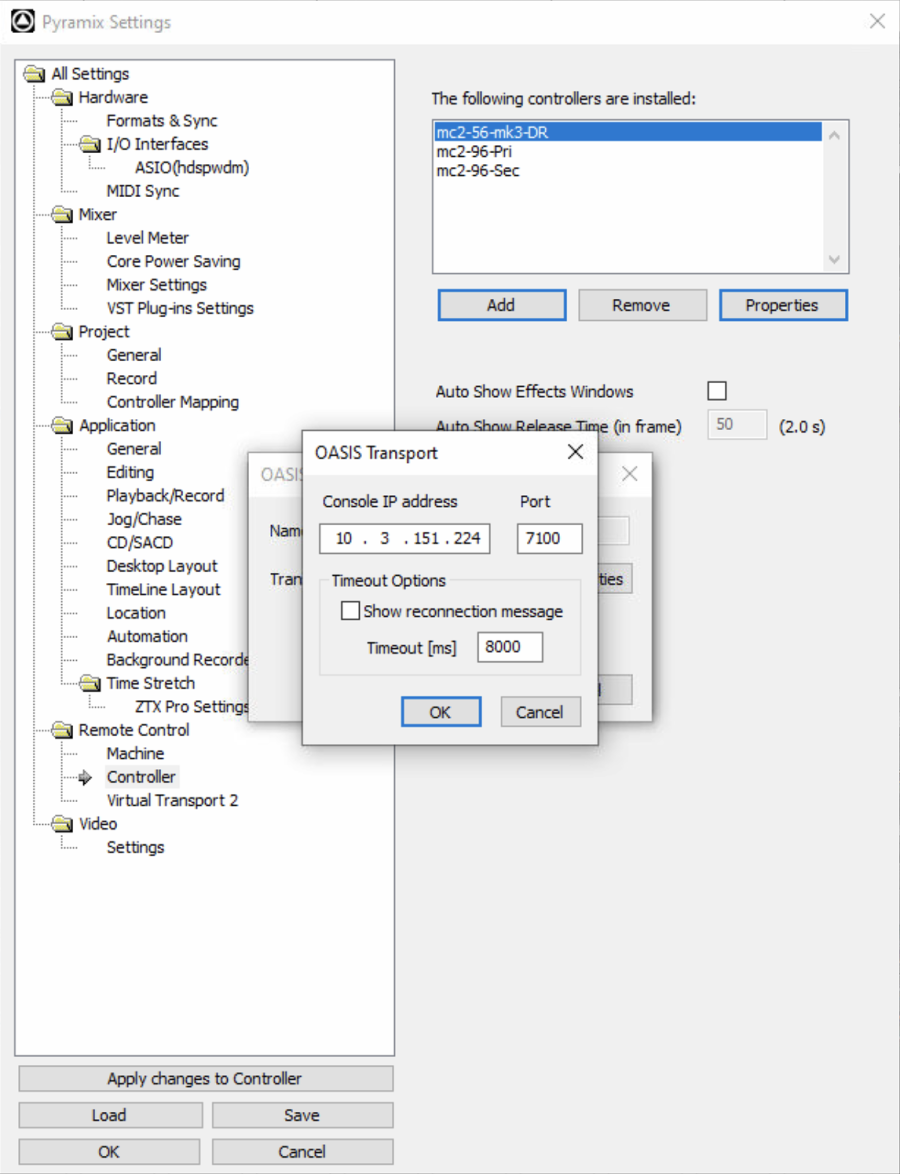mc²36 - General Purpose Channels (GPCs)
GPCs (General Purpose Channels) are control channels that can be assigned to any fader strip. They can be used to remotely control parameters within an external device, or be mapped to internal parameters to provide more convenient control (e.g. to adjust EQ Gain from a fader).
Typical applications include:
- Adjusting fader levels and other parameters within a digital audio workstation (DAW).

- Adjusting and storing camera microphone levels via a Camera Control Unit (CCU).

Up to 256 GPCs are supported, where each GPC features the same control objects as a normal DSP channel: EQ, Delay, Compressor, Limiter, etc. Exactly what parameters can be controlled depends on how the GPCs are configured. In all cases, the following operations are possible:
- Fader Strip Assignment - GPCs can be assigned to any fader strip in the usual manner - select GPC as the channel type followed by the GPC number.
- Parameter Control - GPC faders (and other controls) can be used to remotely adjust parameters within the external device. The level of integration depends on the protocol and its configuration.
- Snapshot Reset - the settings for GPCs are stored in snapshots in exactly the same way as for DSP channels. This allows you to store and recall settings for the external device, and use features such as SNAP ISO to isolate an individual GPC.
Controlling External Devices (using GPCs)
In the current release, two communication protocols are supported: MIDI and OASIS. MIDI is ideal for generic devices, while OASIS provides a deeper level of integration with the Pyramix workstation (from Merging).
MIDI
mc2 consoles support native RTP-MIDI (MIDI over Ethernet) plus standard MIDI in.out connections (via the optional Recording Com Kit).
When using RTP-MIDI, control of up to 32 channels (four conventional MIDI devices) can be achieved using an Ethernet connection to the Lawo network. RTP-MIDI support is native within MAC computers and can be achieved on PCs using dedicated software tools.
To use this feature, the GPC parameters must be assigned to MIDI program changes and controller values. This can be handled either by the factory configuration or by adding some Channel Parameter to MIDI Mapping functions (via the Custom Functions display).
OASIS
OASIS is a control integration protocol for the Pyramix workstation. It allows the mc2 control surface to act as a hardware controller for a Pyramix workstation or Ovation media server and sequencer. Up to 256 channel strips can be remotely controlled from the console's GPCs. The integration includes not only Fader, Mute, etc. but also all mappable items of the Pyramix channel strip like EQ and Dynamics. Furthermore, machine control of Pyramix integrates seamlessly with the console.
Supported features:
- Up to 256 Strips / Channels (via 256 GPCs)
- Fader Level, Mute, Phase, Label (Label transfer is from Pyramix to mc2)
- Panning X, Y, Z, LFE, Slope
- Strip Tools / Bus Tools for Gain, EQ, Dynamics
- Solo and Rec arm (via Fader User Buttons)
- Machine Transport Control
- PLAY, REC, RW, FFWD, STOP
- Machine Timecode
Currently, metering is not supported.
To use this feature, the OASIS IO must be activated and mapped to the console's GPC channels. This can be handled either by the factory configuration or by adding an instance of the OASIS Strip/Bus to GPC Channel Mapping function (via the Custom Functions display).
The OASIS IO is loaded to the mc2 control system, where it acts as a server for Pyramix (or Ovation). All of the connection management is handled by Pyramix.
When configuring the mc2, the variables are as follows.
- Number of GPCs - determines how many GPCs are used for the integration (up to 256).
- First GPC Channel and First OASIS Strip/Bus - define the mapping of the channels.
- If both fields are set to 1, GPC 1 (on the console) controls Input Strip 1 (in Pyramix).
- Within Pyramix, the Input Strips and Buses are counted continuously. So, for example, if there are 32 Input Strips and 1 Bus in Pyramix, then GPC 33 controls the Bus.
- Enable Button - enables the remote control connection. It can be assigned to any central user button.
- Solo Button and Rec Arm Button - enable the Pyramix Solo and Rec arm. They can be assigned to any of the fader strip user buttons.
Within the Pyramix software, the console must be added as a Controller by going to 'Settings > All Settings > Remote Control > Controller'.
- From here, Add a new controller, give it a name and select the OASIS protocol for both Driver and Transport.
- Press Properties and enter the IP address of the mc2 control system as the Console IP address and change the Port to 7100.
- It is possible to have a list of mc² consoles as controllers and one can enable/disable them using the Properties button in the settings dialog. For redundant XCS control systems, it is required to add in two controller entries for the two XCS instances.
- Press OK to apply the changes and initialize the console as a controller.
- Once the connection is setup, Pyramix always pushes its current state to the console.
Pyramix Settings (example)
Controlling Internal DSP Parameters (using GPCs)
GPCs can also be used to control and automate DSP channel parameters (within the mc2). For example, to control a variable parameter (e.g. EQ Gain) from a fader.
To use this feature, you must create a DSP Parameter to GPC Mapping function (via the Custom Functions display). The GPC can then be assigned to any fader strip and operated in the usual manner.